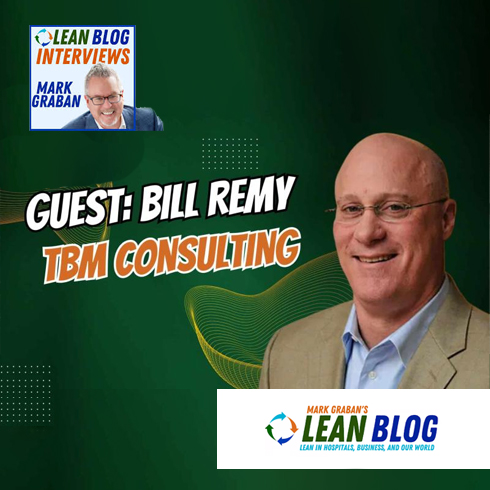#3 Beyond the Status Quo: Reaching Growth through Continuous Improvement
In our series “Stop Flatlining Growth in Manufacturing,” we explored the barriers to growth manufacturers have faced over the years and discussed strategic and tactical solutions to overcome these stagnations. In the concluding post of this series, I will dive into two solutions that have stood the test of time and have been validated by our clients as essential for achieving both short-term and long-term growth: 1. Cultivating a culture of Continuous Improvement (CI), and 2. Deploying a robust Management System. These strategies may not be groundbreaking, but they are fundamental to driving change and enhancing processes, thereby ensuring sustainable growth and excellence in manufacturing organizations. However, embarking on this transformation requires patience and effective leadership, as overcoming challenges and implementing change is a gradual process. In this blog post, I’ll discuss the common hurdles organizations encounter and offer advice on successfully implementing a continuous improvement strategy and a supportive management system.
Beware of the Obstacles
At TBM, we advocate for and assist our clients in adopting continuous improvement as a key strategy to foster both immediate and long-term growth. This journey demands patience, drive and support across all operational levels. Embarking on this journey is critical but comes with its own set of challenges that organizations must overcome to implement and maintain these improvements successfully. The primary obstacles we frequently encounter in manufacturing organizations include resistance to change, a lack of leadership commitment, and inadequate resources:
- Cultural Resistance: Adopting a culture of continuous improvement signifies a major shift and often encounters, what I like to call, “Emotional inertia.” This term refers to the reluctance of individuals (both leaders and employees) to alter their customary practices, even when such changes could lead to growth. Fears about the unknown, potential job losses, or a simple preference for maintaining the status quo can significantly hinder the progress of continuous improvement efforts, particularly if opposed by leadership.
- Leadership Commitment: A significant challenge arises from a leadership’s unwillingness to change, often stemming from a “if it isn’t broken, don’t fix it” mentality. Such resistance is not merely obstinacy but a failure to recognize the transformative potential of continuous improvement. Leaders must lead and without the robust backing and active engagement of senior management, initiatives may stumble due to a lack of guidance, resources, and motivation.
- Resource Allocation: The deployment of continuous improvement initiatives typically necessitates investments in personnel, training, tools, and sometimes new technologies. Organizations might struggle with allocating the necessary resources, especially if the effort is not linked to operational and financial benefits.. A lack of resources can lead to ineffective processes, employee burnout, and decreased productivity.
- Maintaining Gains: Keeping improvements in place over the long term poses its own challenges. Without a system to integrate changes into daily operations and metrics to aim for, there’s a danger that employees might fall back into old patterns. Ongoing monitoring, evaluation, feedback mechanisms, and the reinforcement of desired behaviors are essential.
We champion continuous improvement at TBM due to its significant impact on manufacturing companies’ operational and financial growth. Yet, to unlock their full potential, companies must navigate past these barriers. How can they do this? Adopting a Continuous Improvement philosophy and leveraging a Management System to drive change through leadership development, problem-solving, process improvement, and performance measurement can cultivate a culture of enhanced productivity.
Continuous Improvement Philosophy in Action
Understanding the essence of continuous improvement begins with embracing the power of employee engagement. The Kaizen Methodology is an effective approach that enables employees at every organizational level to continuously work together toward the development of incremental enhancements within the manufacturing workflow and create action plans to achieve them. For leaders, adopting a Kaizen mindset means viewing change as an opportunity for development rather than a hindrance. It empowers team members to collaborate to uncover inefficiencies and areas ripe for enhancement from the bottom up.
A common practice among manufacturers committed to continuous improvement is organizing Kaizen events. These events are focused on rapid step change improvements and are crucial for assembling interdisciplinary teams to identify and implement refinements in specific sectors or processes, typically over a brief period ranging from one to five days. Characterized by their intensive collaborative nature, these sessions require the full involvement of team members, particularly those with direct experience in the areas being addressed. As an integral component of Lean manufacturing and continuous improvement efforts, Kaizen events provide a flexible yet organized approach to making quick, incremental changes with direct impact.
Go Beyond Immediate Improvements – Sustain Them
Once improvement initiatives are identified in these Kaizen events, now what? It is time to implement and execute these improvements. However, a very common issue we see in manufacturers is the ability to sustain these improvements in the long term. This is where a management system comes in to do the heavy lifting to create the discipline to execute and sustain improvements (and the gains that result from them) that align with annual and 3–5-year goals. TBM has developed a management system designed to uphold the principles of continuous improvement and facilitate its execution. This system is a thoughtfully coordinated combination of management processes and tools that bridge the gap between the company’s strategy, annual goals, and daily activities, including key performance indicators and the initiation of corrective measures. It enables managers and employees to champion process enhancements daily and ensures ongoing progress. The foundational elements of the TBM Management System, which I refer to as the ‘Three-Legged Stool,’ include:
- The Structure and Process of the Management System: Incorporating tools like tier meetings, Leader Standard Work, and layered auditing, these elements collectively form the system’s backbone and steer our actions.
- Management of Daily Metrics: Defining the critical few metrics that will drive the business then fostering the discipline and consistency necessary to drive behaviors and actions. This involves establishing objectives, tracking progress, pinpointing missed targets and root causes, and making adjustments daily.
- Capability Development for Leaders and Front-Line Staff: Frontline leaders are the linchpin of the management system, tackling the most pressing and strategic operational challenges. Yet, they are the most often overlooked. We have to build their leadership capability to perform within this structure and metrics we have created within the system. They guide and support associates in honing their skills in problem-solving, decision-making, and fostering continuous improvement every day.
Leadership’s Role in Championing Change
Each pillar of this approach represents a shift from the familiar, inevitably leading to some degree of reluctance and pushback, as previously mentioned in this blog. The presence of an effective leader—someone who is both driven by results and capable of inspiring their team—is crucial for catalyzing success and facilitating execution within the rigorous framework of the management system. Leadership is not merely about issuing commands but about uplifting, inspiring, and steering teams toward shared objectives. For every implementation of a management system, leaders must:
- Articulate the Imperative for Change: If this isn’t a burning platform for your company now, then make it one! Leaders need to convey a passionate and persuasive vision that rallies the team around shared objectives, creating a sense of critical urgency without inducing fear—emphasizing the need for action while avoiding despair.
- Establish a Culture of Continuous Improvement: This entails developing a systematic method for identifying, implementing, and maintaining enhancements. Rooted in Kaizen principles, this culture prioritizes incremental, ongoing improvements that cumulatively effect substantial change.
- Mobilize and Empower the Team: At its core, the efficacy of the management system hinges on its people. Activating and involving the workforce in this process is crucial. This involves not just soliciting their input on areas for improvement but also enabling them to spearhead these efforts. The goal is to transition from a hierarchical to a more participatory, team-centric framework. An engaged workforce outperforms a non-engaged workforce anytime!
- Acknowledge and Celebrate Progress: Acknowledgment is key to maintaining enthusiasm. Leaders should commend both minor advancements and major achievements, underscoring the significance of the team’s efforts and their contributions to the organization’s success.
As we conclude our series “Stop Flatlining Growth in Manufacturing,” we reflect on the journey through the complexities and solutions for overcoming growth stagnation in the manufacturing sector. The journey of continuous improvement is a testament to the power of perseverance, leadership, and strategic foresight. It underscores the importance of not only initiating change but sustaining it, ensuring that today’s improvements become the foundation for tomorrow’s success. The roadblocks, though formidable, are not insurmountable. With the right mindset, tools, and leadership, manufacturing organizations can transcend these barriers, unlocking their full potential and setting the stage for a future marked by growth and excellence.






